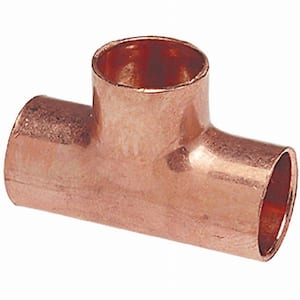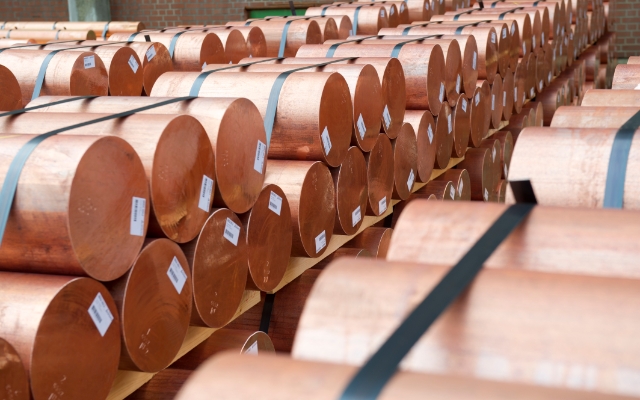Just How Copper Products Add To Sustainable Practices in Different Markets
Copper items are increasingly identified for their substantial contributions to lasting methods across numerous fields, driven by their integral buildings such as recyclability, effectiveness, and longevity. In renewable resource systems, for instance, copper improves the capability of solar and wind innovations, while its application in building minimizes waste through durability. The product's antimicrobial characteristics supply appealing benefits in healthcare settings. As markets seek to take on more lasting practices, the function of copper might show pivotal in achieving ecological goals. What implications might this have for future technologies in sustainability?
Copper in Renewable Power
Copper plays a vital role in the advancement of renewable resource innovations, acting as an essential conductor in numerous applications. Its phenomenal electric conductivity and resistance to deterioration make it an ideal product for electric circuitry, which is vital in photovoltaic panels, wind generators, and power storage systems. In solar photovoltaic or pv systems, copper is used in the affiliations and wiring, enabling efficient power conversion from sunshine to power.
In wind power, copper is essential to the generators and transformers that transform kinetic energy into electrical energy, making sure optimum performance and reliability. The demand for electric vehicles (EVs) is raising, with copper being a key component in batteries, electric motors, and charging infrastructure. The shift to EVs considerably boosts the need for copper, as these lorries generally make use of four times extra copper than traditional internal burning engine cars.
As the globe seeks to mitigate climate change and shift to sustainable power resources, copper's duty ends up being increasingly essential. The product not just enhances the performance and sturdiness of renewable resource systems but additionally supports the more comprehensive objective of minimizing greenhouse gas discharges and promoting a sustainable future.
Eco-Friendly Building And Construction Materials
In recent times, there has been a significant shift towards the fostering of environment-friendly construction materials in action to expanding environmental worries. This change is encouraged by the demand for sustainable options that decrease eco-friendly impacts while preserving structural honesty and visual appeal.
Copper, recognized for its longevity and recyclability, has actually arised as a crucial player in this market. It can be used in roofing, pipes, and electrical systems, contributing to power effectiveness and minimizing waste. Copper's durability suggests fewer replacements in time, more enhancing its sustainability account.
Furthermore, materials such as bamboo, redeemed timber, and reused steel are acquiring appeal. These options not just provide minimized environmental impact however likewise advertise resource conservation. As developing codes increasingly emphasize sustainability, engineers and building contractors are incorporating these materials right into their projects, promoting development in layout.
The raising adoption of green building and construction products mirrors a broader commitment to sustainability in the developed setting. By prioritizing these materials, the building industry can substantially reduce its carbon footprint, line up with regulative criteria, and sustain a much healthier ecological community for future generations. This pattern notes a critical step towards a more sustainable future in building.
Copper's Role in Healthcare
Current researches have actually highlighted the considerable duty of copper in medical care settings, particularly as a result of its antimicrobial properties. Copper surfaces have actually their explanation been shown to lower the presence of pathogens, including microorganisms and infections, by as much as 99.9% within a short period. This amazing efficacy makes copper an indispensable material for high-touch surfaces in health centers, such as doorknobs, bed rails, and IV posts, thereby adding to enhanced infection control measures.
Along with its direct antimicrobial impacts, copper additionally plays a role in the wider context of health center sustainability (Copper Products). By integrating copper into medical tools and home furnishings, healthcare facilities can lower the occurrence of healthcare-associated infections (HAIs), which not only enhances individual end results yet also decreases the expenses related to extended hospital stays and additional treatments
In addition, copper's longevity and recyclability align with lasting practices, permitting liable resource monitoring. As health care systems progressively focus on both individual safety and security and ecological stewardship, the integration of copper products is ending up being more prevalent. This dual benefit emphasizes copper's important contribution to a much healthier, much safer, and a lot more lasting healthcare atmosphere.
Sustainability in Transportation

In addition, copper's durability and corrosion resistance add to the long life of transportation framework (Copper Products). In rail systems, as an example, copper parts boost the reliability and efficiency of signaling and power systems, important for minimizing delays and power consumption. Additionally, copper's duty in renewable energy systems, sites such as solar and wind, sustains sustainable transport remedies by offering tidy power for electrical transit choices
Investments in copper innovation not just foster sustainability yet likewise promote economic growth and job development in eco-friendly markets. As sectors make every effort to fulfill rigid environmental regulations, the application of copper products in transportation arises as a crucial strategy in attaining sustainability objectives and advertising a cleaner, more efficient future.
Copper and Circular Economy
As the world increasingly embraces sustainability, the function of copper in the round economic climate becomes ever before extra considerable. Copper's intrinsic buildings-- such as its conductivity, recyclability, and sturdiness-- placement it as a crucial material in a resource-efficient economy. The round economic situation intends to lessen waste and make best use of source usage through recycling and reusing materials, and copper master this regard.
The metal can be reused indefinitely without loss of high quality, making it an excellent prospect for lasting techniques across numerous sectors, including building, electronic devices, and renewable resource. By recuperating and reprocessing copper from end-of-life products, markets can considerably decrease the demand for virgin materials, thus reducing environmental influences related to mining and processing.
Additionally, other the combination of copper into circular economic climate frameworks not just conserves resources but also promotes development. Companies that prioritize copper reusing add to a more lasting supply chain, improving their competition while lining up with regulative needs and customer preferences for ecologically responsible items.
Conclusion
To conclude, copper products substantially contribute to sustainable practices throughout multiple markets. Their essential role in enhancing renewable resource innovations, promoting eco-friendly building and construction products, sustaining infection control in medical care, promoting lasting transport, and embodying the principles of a round economy emphasizes the adaptability and importance of copper. By incorporating copper right into different applications, sectors can accomplish greater efficiency, reduce environmental impact, and align with international sustainability objectives, ultimately promoting a much more lasting future.

Copper's excellent conductivity makes it a recommended material in electric vehicle (EV) systems, improving energy performance and performance. Additionally, copper's role in renewable energy systems, such as solar and wind, supports lasting transportation solutions by providing tidy energy for electrical transportation options.
Their necessary duty in improving eco-friendly power innovations, advertising green building and construction materials, sustaining infection control in healthcare, promoting sustainable transport, and embodying the principles of a circular economic climate underscores the convenience and value of copper.